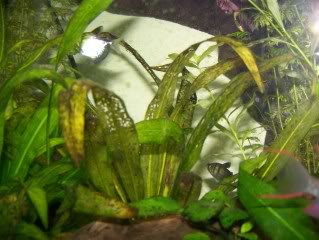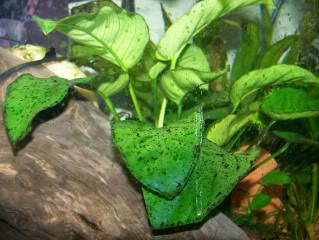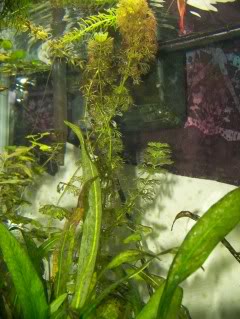Upgraded the lighting system in my 55gal a few months ago and although plants started to look better at first, leaves on some of the amazon swords are beginning to turn yellow, develop lots of tiny holes, and die, while other plants like the anubias nana and cabomba are covered with heavy black algae. Since this came after upping the lighting (had 2x15W bulbs previously), I thought it might be too little CO2 but judging by descriptions of typical aquatic plant problems, sounds more like I'm missing potassium, phosphorus, or magnesium, or maybe all three. Unfortunately I can't find any sites that have pictures to match the descriptions.
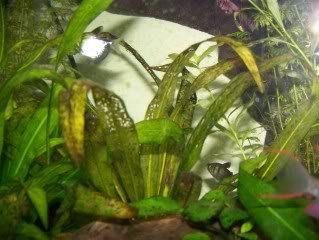
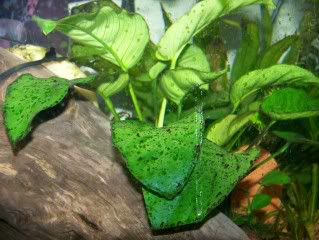
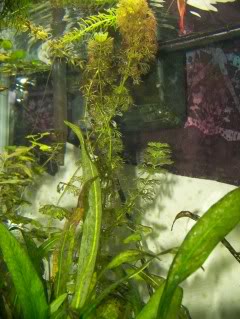
Tank stats are, more or less, as follows:
water temp = 76 - 78
nitrate < 20ppm
lighting = 2x28W T5 fluorescent, one is a 6700k plant bulb
pH = 7 - 7.4
additives = 1.5 capfuls of Flourish (plain stuff, not like Excel) 1x a week
I also use RO/DI water due to high nitrate and hardness levels in my tap water. To bring levels of the good stuff back up, I use baking soda and Kent's RO Right, which gets me to 'soft water' level (GH & KH = 30-50). Also, I do have one large black mystery snail
So, any ideas on what I'm lacking? Can anybody recommend good sites explaining the differences in plant nutrient deficiencies? Think I'd found one a while back but so far, no luck.
Thanks!



Tank stats are, more or less, as follows:
water temp = 76 - 78
nitrate < 20ppm
lighting = 2x28W T5 fluorescent, one is a 6700k plant bulb
pH = 7 - 7.4
additives = 1.5 capfuls of Flourish (plain stuff, not like Excel) 1x a week
I also use RO/DI water due to high nitrate and hardness levels in my tap water. To bring levels of the good stuff back up, I use baking soda and Kent's RO Right, which gets me to 'soft water' level (GH & KH = 30-50). Also, I do have one large black mystery snail
So, any ideas on what I'm lacking? Can anybody recommend good sites explaining the differences in plant nutrient deficiencies? Think I'd found one a while back but so far, no luck.
Thanks!

